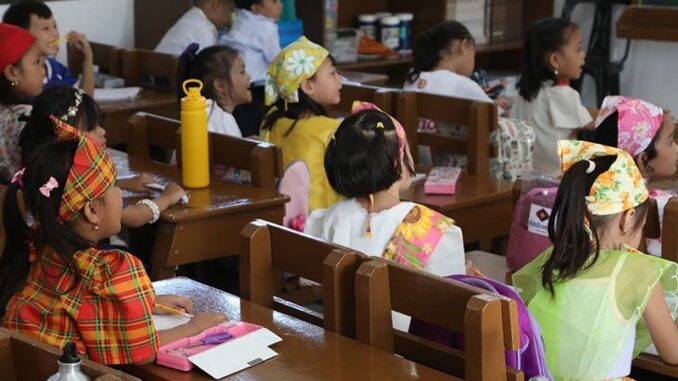
MANILA, Philippines — A bill that would discontinue the use of the mother tongue in multilingual classes from Kindergarten to Grade 3 has lapsed into law without the signature of President Ferdinand Marcos Jr.
The new law amends the Enhanced Basic Education Act of 2013, or Republic Act 10533, which mandated the Mother Tongue-Based Multilingual Education (MTB-MLE) program.
Under the Enhanced Basic Education Act of 2013, the mother tongue became the instruction medium from kindergarten to the first three years of elementary education to enhance comprehension and literacy.
With the passage of RA 12027, “the medium of instruction shall revert to Filipino and until otherwise provided by law, English.”
Regional languages may still be used as supplementary teaching tools.
The new law also introduces optional implementation of the MTB-MLE program in monolingual classes, where all students share the same native language. However there are several conditions, which include the following:
- Official orthography developed and published by the Komisyon ng Wikang Filipino (KWF)
- Officially documented vocabulary published by the KWF
- Availability of teachers in the school who speak and are trained to teach in the mother tongue
The Department of Education (DepEd) is assigned with reviewing the optional implementation of the MTB-MLE program in monolingual classes three years after the law takes effect.
The DepEd must also develop a mapping policy, in consultation with the KWF, within one year to assess students based on their native language and identify monolingual classes nationwide.
The law will take effect 15 days after its publication in the Official Gazette.
A Filipino advocacy group previously criticized the removal of the mother tongue subject from the revised K-10 curriculum, warning that it could undermine the progress made in teaching students in their first language, a practice already integrated into the K-12 program.





Be the first to comment